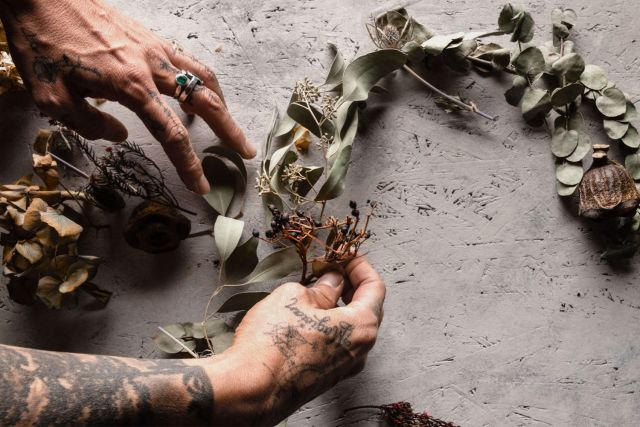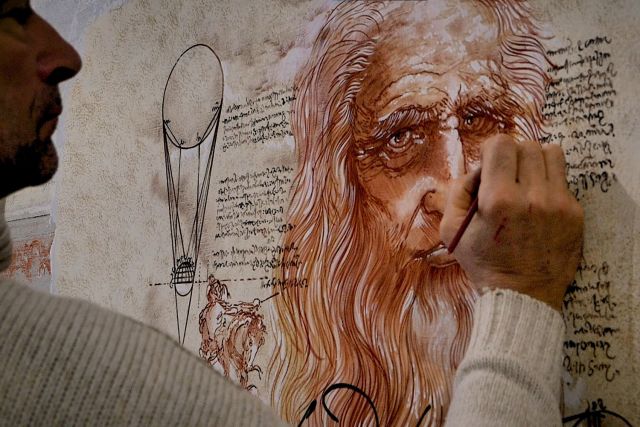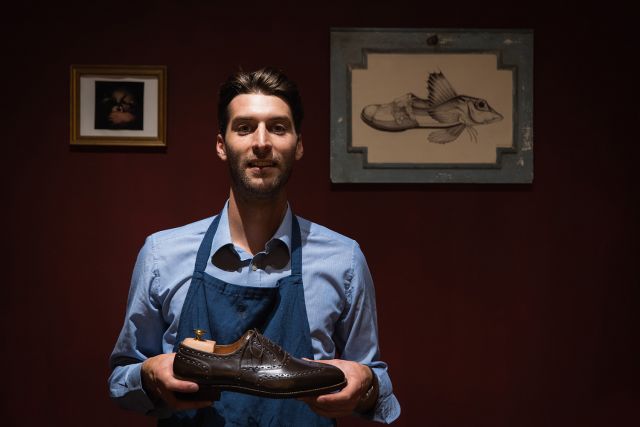This circular murrine glass object portrays two great tits (Parus major) standing atop brown twigs. Murrine are coloured patterns or images created when thin glass rods or “cane” (made by stretching and compacting molten glass) are fused together, reducing the diameter and internal design. The patterns/images appear when the fused cane is cut into cross-sections.
Diameter 20 mm
Diameter 38 mm
 _MEM6883.MOV.jpg.jpeg)
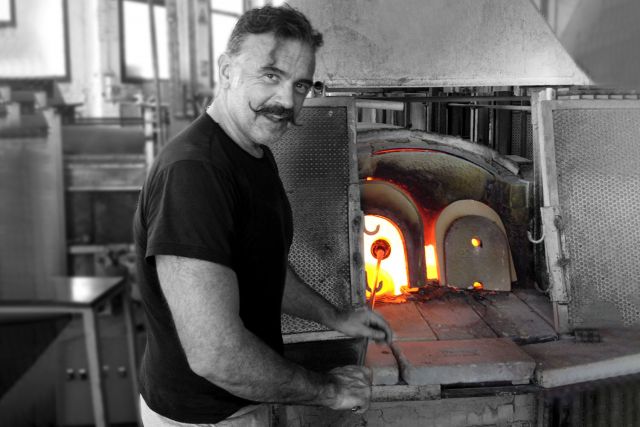
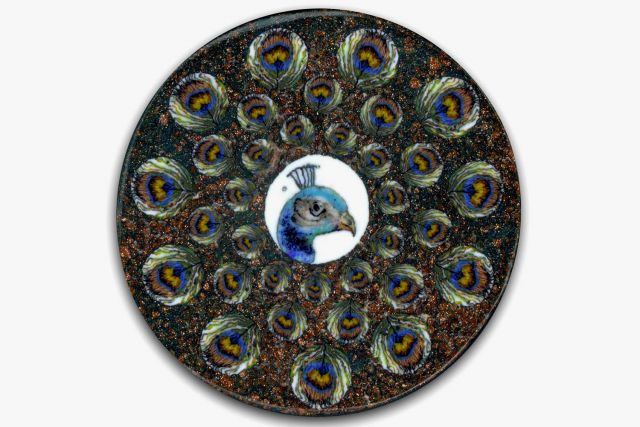
 vongole 2017.jpg.jpeg)
Antonio Dei Rossi
- Glass fuser
- Venice, Italy
- Master Artisan
- Recommended by Isabelle Valembras-Dahirel
By appointment only
Miniature marvels in glass murrine
- • The art of Venetian murrine was developed in the mid 19th century
- • Big cats are among Antonio's favourite subjects
- • His works are exhibited in the Murano Glass Museum
Months of hard work, resting in the palm of your hand. Small marvels of painstaking patience, created by joining together millimetre-thick pieces of glass to form a pattern identical to the original drawing on paper. Only very few glassmakers still master this art. Venice may be full of murrine works, but only a few are miniature portraits. Most of these carry the signature of Antonio Dei Rossi, who was born in the trade and has successfully mastered his father’s teachings. The precision of Venetian murrine has risen to incredible heights thanks to him. He favours a distinctive choice of subjects, mostly flora and fauna.
Read the full interviewWorks
Photo: © Antonino Dei Rossi

Photo: © Antonino Dei Rossi
Nine murrine glass creations portraying the upper torso of a zebra are incorporated into an 18k gold necklace. The murrine are set is a way that they can rotate on an axis and the zebra can face either left or right. Murrine are coloured patterns or images created when thin glass rods or “cane” (made by stretching and compacting molten glass) are fused together, reducing the diameter and internal design. The patterns/images appear when the fused cane is cut into cross-sections.
Diameter 130 mm
Height 25 mm

Photo: © Antonino Dei Rossi
This circular murrine glass object depicts a pink rose set against a contrasting dark background. Murrine are coloured patterns or images created when thin glass rods or “cane” (made by stretching and compacting molten glass) are fused together, reducing the diameter and internal design. The patterns/images appear when the fused cane is cut into cross-sections.
Diameter 22 mm
Diameter 26 mm

Photo: © Antonino Dei Rossi
This circular murrine glass object portrays a tiger set against a monochrome green background. Murrine are coloured patterns or images created when thin glass rods or “cane” (made by stretching and compacting molten glass) are fused together, reducing the diameter and internal design. The patterns/images appear when the fused cane is cut into cross-sections.
Diameter 0.2 cm
Width 2.1 cm
Height 2.1 cm

Photo: © Antonino Dei Rossi
Circular murrine glass objects depicting daisies on a dark background have been added to the top part of this silver bowl. Murrine are coloured patterns or images created when thin glass rods or “cane” (made by stretching and compacting molten glass) are fused together, reducing the diameter and internal design. The patterns/images appear when the fused cane is cut into cross-sections.
Diameter 140 mm
Height 120 mm







